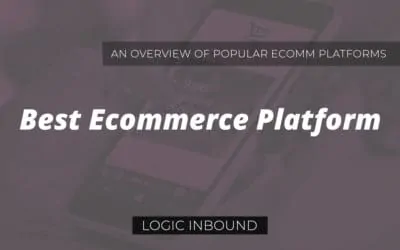By: Ben Lee, Founder of Rootstrap
For many entrepreneurs, mobile apps present an enticing business opportunity – but the mobile app market isn’t the wild west that it used to be. While it used to be almost commonplace for an app to go online and attract millions of users overnight, today, the app market is much more crowded.
Apple’s App Store has more than 2 million apps listed, and the Google Play store has close to 3 million – and some estimates say that only 1% of these mobile apps ever achieve profitability. This means that in the modern app ecosystem, building and launching an app isn’t enough. The marketing plan for your app matters almost as much as the app itself.
Effectively marketing your app can be the difference between a successful launch with a growing user base and a stagnant app that can’t hang onto users – so marketing should be a central concern from day one. So how do you effectively marketing an app? It all starts with a plan.
App Launch Marketing Plan
One of the most important things to understand when marketing an app – and one of the things entrepreneurs most often get wrong – is that marketing an app doesn’t mean trying to get everyone in the world to download your app. In fact, this is the exact wrong strategy. In mobile app marketing, specificity is your friend.
Marketing an app to the population at large is, first and foremost, impossible – but even more importantly, it’s too expensive. Instead, a better approach is through a targeted marketing strategy.
One effective way to determine how to target your marketing plan is by using user personas. These are fictional, archetypal representations of your target user demographic: the core demographic of people that you’re trying to reach with your app. These are the people whose problem your app solves, and accordingly, they’re the best people to market your app to.
Creating user personas is fairly straightforward – actually, it can even be fun! Start by coming up with the basic demographic information for your target user, which includes things like age, location, gender, income, and other characteristics. Then add in the beliefs, thoughts, and opinions of your target user: political opinions, likes and dislikes, favorite media outlets, favorite websites, products, even sports teams – anything that helps you paint a clearer picture of the type of person you believe will use your app. And get specific: give this character a name. The more specific this person is, the more useful the persona will be.
Once you have a clear picture of this persona, map out where they spend their time – both in the physical world and online. What pages do they follow on Facebook? What websites do they visit? Are they a member of any groups? Where do they work? What do they do for fun? What are their hobbies?
This is the most important information in the user persona – because this tells you where to find your users. Once you’ve created a persona and outlined where this persona spends time, you can simply go to those places (physical or online) to market your product. Is your target user a fan of certain Facebook pages? You can use Facebook’s ad targeting to reach them. Is your target user a Redditor? Reddit has an advertising platform.
User personas allow you to guess where your users hang out, which is the ideal place to market your app. And the more specific you are with the target user persona, the more niche you can be with your marketing – which means you can acquire users at a lower cost.
Pre Launch Mobile App Marketing
Marketing to your target users is a critical part of growth user acquisition, and while the majority of this happens after your app goes live, you can (and should) begin marketing your app before you launch.
Chiefly, pre-launch app marketing has a few main goals:
- Build your brand and raise the profile of your app
- Capture email addresses to retain potential users
- Create excitement around the launch date of the app
There are a few ways to do this. It’s usually a good idea to create social profiles for your app on Facebook, Instagram, Twitter, and any other platforms that seem relevant prior to launch. You can then use targeted ads to attract potential users and build a following on these profiles, scheduling consistent, quality content to keep users engaged. This is a great way to build a captive audience and continue re-engaging that audience all the way through the launch date of your app.
In addition, you’ll need to have a website for your app, even if it’s just a simple landing page. The website can be straightforward, but it should clearly explain your app, what it does, and how it will benefit users. Have an email capture widget featured prominently on the page so you can build an email list to market to when your app does go live. You can then use this website as a landing page for search ads (Google ads) or social ads.
In pre-launch marketing, arguably the most powerful thing you can do is create a large email list of people who have expressed interest in the app. The operating word in that sentence is interest: it’s useless to have a list of random emails. But if you can find your target users before the launch of your app, explain the app to them, and get them to sign up to your email list of their own volition, there’s massive value in that. Not only can use send an email blast on launch day, but you can continue marketing to that email list as you launch new features or future ventures.
How to Launch an App Successfully
As you close in on launch day, your marketing efforts should intensify. Run more aggressive targeted social and search ads, and don’t be afraid to send an email or two in advance of the launch – but be careful, as you don’t want to come off as spammy.
Another marketing strategy that can be difficult but can carry a high reward is PR (public relations). PR can be tricky to secure – but if you can manage a good feature in a solid media outlet, it can generate a huge boost in your user base.
You can use PR as a part of your pre-launch marketing, but PR placements are generally more valuable to you if they happen after the app goes live because they can lead to direct conversions. In any case, you should start reaching out to media outlets in the weeks leading up to the launch of the app.
As with user personas, specificity is your friend here. Look for websites and media outlets that have a lot in common with your app, and try to offer value to journalists when you reach out to them. If you already have a large audience on Facebook or another social network thanks to your pre-launch marketing, that’s a plus.
When launch day finally comes, and for the first few days after it, you’ll want to watch your traffic like a hawk. On all your social profiles and the Google Analytics of your website, be looking for traffic spikes. If you see one, rejoice – but also find out where it came from, immediately. If, for example, you got a media feature on an obscure Swedish web magazine, you want to find that article so you can repost it on all your social channels and amplify its effect. You can also use it as leverage when pitching to new media outlets.
Mobile App Marketing Plan Template
Ready to get started building your mobile app marketing plan? Here’s a simple checklist to take you from pre-launch to post:
| Pre Launch | |
| Build user personas | |
| Create Social Profiles | |
| Create Website/Landing Page | |
| Find target user Facebook groups, subreddits, online communities | |
| Set up search ads, social engagement ads & run limited campaigns | |
| Run search ads to landing page to build email list | |
| Launch | |
| PR Outreach | |
| Monitor Google Analytics for traffic spikes | |
| Run aggressive, conversion-focused social & search campaigns | |
| Post Launch | |
| Continue PR outreach, social ads, search ads | |
| Test traffic sources and devote resources to highest-yield sources/marketing efforts | |
| Collect user feedback to improve mobile app | |
| Test new marketing channels & continue to optimize | |
How Do You Bring an App to Market
By now, you should have a solid idea of what it means to put together and execute a mobile app marketing plan – but what else does it take to bring an app to market? And how do you ensure your app will succeed in the long-term?
One key point for ensuring your app succeeds in the market is to remember that while it may feel like you’re simply launching a mobile app, you’re actually starting a business. To survive, your mobile app needs to make money, just like any other business.
This means that despite what some may tell you, you have to think about monetization from the get-go. If you don’t have a concrete plan for monetizing your app early on, you’re shooting yourself in the foot. These days, the old strategy of trying to attract a lot of users and figure out how to make money off of them later just won’t cut it.
You may use a paid download, subscription, freemium, or an ad revenue model – ultimately, how you monetize your app isn’t what’s important. What matters is to put the plan in place early on.
Building Your App’s Online Presence
Finally, it’s critical to understand that mobile app marketing doesn’t end on launch day. Even once your app has a sizeable user base and has been live for some time, you’ll need to continue growing the app and building your business. One of the best ways to do that is to grow your app’s online presence.
This is important because it’s part of the larger of picture of turning your app into a growing business. Building a presence online helps you build your brand, which not only can help grow your user base but also can create opportunities for new products and future expansions.
Building your app’s online presence is similar to building an online presence for any business, and traditional methods like a website and strong social profiles are central. You might also consider opportunities to develop a desktop or web-based version of the app, which would open it up to non-mobile users. If you want to promote your app using SEO, then you should review our Basic SEO Checklist to make sure you cover all the bases for your marketing site or webapp.
The most important thing is to treat growth as something that never ends. No matter how big your user base gets, there are always opportunities to expand it, to penetrate new demographics, and to innovate new features and products.
After all, Facebook has a user base of more than 2 billion people. With the right product and the right marketing plan, you might just be able to achieve the same thing.
Learn More about Rootstrap
We scale digital solutions. Helping startups and enterprise customers stay lean and modern on the web and mobile for the past six years.
With offices on three continents, we have distributed agile team members in Los Angeles, San Francisco, New York, Montevideo, and Buenos Aires.
Our team is comprised of over 70 world-class software engineers, UX/UI designers, growth hackers, product strategists, and project managers.
Our award-winning process, Roadmapping™ by Rootstrap, gives you a clickable prototype of your MVP in 4 weeks. We democratized the startup app development process by making it more accessible for every day founders who want to build. We’ll prototype your idea and find actual customers who would engage with the product before ever writing a single line of code.
250+ product launches, hundreds of happy customers turned agile, and millions of downloads across multiple platforms.
Think of us as your own private incubator or founder bootcamp where we flesh out your idea and prep it for success in the market.
Want to work with us? Hit us up at hello@rootstrap.com
+ 9 publicly traded companies serviced
+ 100s of happy customers
+ 75+ major publication featured us and our process
+ 25 startups who have secured VC funding
+ Largest acquisition from Rootstrap alum $25MTech Chops:
+ Ruby on Rails
+ ReactNative
+ nodejs
+ AI + chatbot dev
+ Swift
+ Android
+ AWS + Heroku
+ Unity3D
+ Cocos2D
+ Angular
+ RedisSPECIALTIES:
+ AI/NLP
+ chatbots
+ AR/VR
+ Blockchain tech
+ IoTSERVICES:
+ Roadmapping
+ Product Strategy + Development
+ Staff Augmentation
+ Growth HackingHit us up! hello@rootstrap.com to discuss your app idea today.



0 Comments